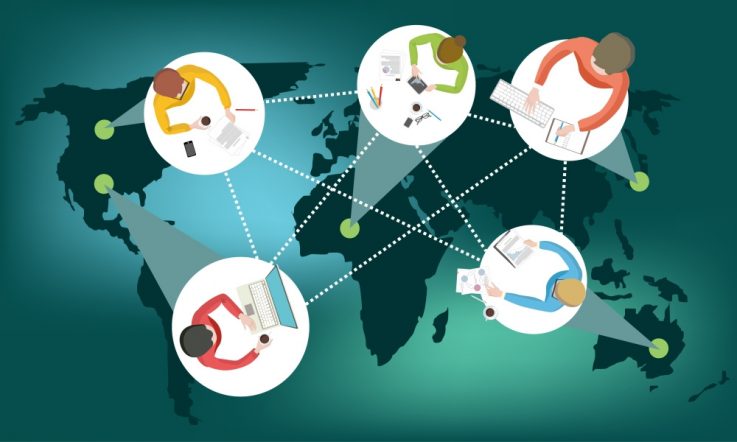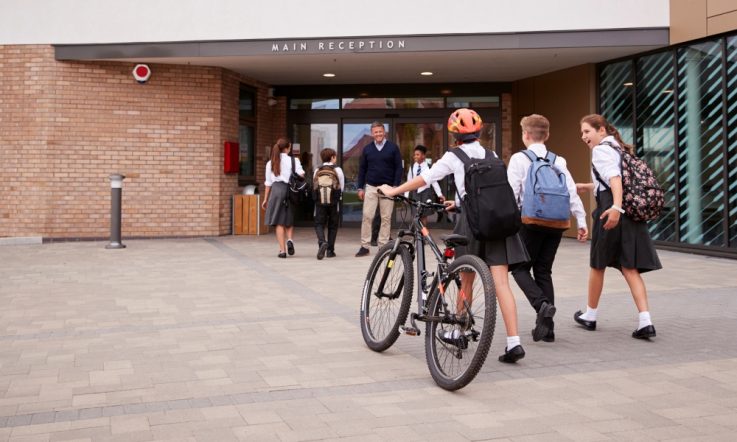The state of education globally – insights from PISA 2018
Over 10 million students represented by PISA (the Programme for International Student Assessment) in 2018 were not able to complete even the most basic reading tasks – and these were 15-year-olds living in the 79 high- and middle-income countries that participated in the testing cycle.
Moreover, fewer than one in 10 students in OECD countries was able to distinguish between fact and opinion, based on implicit cues pertaining to the content or source of the information (13 per cent in Australia). And in many countries, the quality of the education a student acquires can still best be predicted by the student's or his or her school's socioeconomic background. Not least, there has been no real overall improvement in the learning outcomes of students in OECD countries over the past two decades, even though expenditure on schooling rose by more than 15 per cent over the past decade alone.
It might be tempting to drop this column, and any further thought about improving education, right about now. Impossible to change anything as big, complex and entrenched in vested interests as education.
But keep reading. Why? Because 15-year-old students in four provinces of China (Beijing, Shanghai, Jiangsu and Zhejiang) outperformed their peers in all of the other 78 participating education systems – in mathematics and science by a wide margin, and in reading, only Singapore came close. In fact, the 10 per cent most disadvantaged students in these four provinces showed better reading skills than those of the average student in OECD countries, and performed on a par with the 10 per cent most advantaged students in some of them.
It is also noteworthy that some of today's highest-performing education systems have only recently attained their top positions. Less than 17 per cent of 55- to 65-year-old Singaporeans scored at Level 3 or higher in literacy in the OECD Survey of Adult Skills (a kind of PISA for adults) – one of the smallest proportions amongst participating countries – while 63 per cent of 16- to 24-year-olds did so, one of the largest proportions. And, as noted before, in PISA 2018, 15-year-old Singaporeans scored not statistically different from the four provinces in China in reading.
Improving countries
Amongst OECD countries, Estonia has advanced steadily towards the the top, despite the fact that its expenditure per student remains about 30 per cent lower than the OECD average. Portugal advanced to the OECD average level despite being severely hit by the financial crisis. Some countries that still perform well below the OECD average saw remarkable improvements in their students' performance, most notably Albania, the Republic of Moldova, Peru and Qatar. Turkey's improvement between 2003 and 2018 may look somewhat less impressive, but Turkey was able to double the coverage of the 15-year-olds who are enrolled in school and covered by PISA from 36 per cent to 73 per cent during that period. Five other countries – namely Albania, Brazil, Indonesia, Mexico and Uruguay – also significantly increased enrolment rates in secondary education over their participation in PISA and maintained or improved their mean reading, mathematics and science performance. This shows that the quality of education does not have to be sacrificed when increasing access to schooling.
Some countries were able to move to a more positive trajectory in recent years after a period of stagnation or decline. Sweden showed an improving trend in all three subjects between 2012 and 2018, reversing earlier declines in mean performance. Argentina, the Czech Republic and Ireland saw recent improvements in reading; Denmark, Ireland, Jordan, Slovenia and the United Kingdom in mathematics; and Jordan and Montenegro in science. In some countries, some of these trends can be related to changes in the demographic composition of the student body; but in no country do such demographic changes alter the picture dramatically. But for Australia, performance trends have been negative in all three subject domains.
PISA also shows that in most countries excellence in education is apparent amongst some of the most disadvantaged students and schools. On average across OECD countries, one in 10 disadvantaged students was able to score in the top quarter of reading performance in his or her country, indicating that disadvantage is not destiny. In fact, in Australia, but also in Canada, Estonia, Ireland and the United Kingdom, more than 13 per cent of disadvantaged students were academically resilient. Similarly, more than 30 per cent of immigrant students in Brunei Darussalam, Jordan, Panama, Qatar, Saudi Arabia and the United Arab Emirates scored in the top quarter of reading performance. These successes do not come about by chance. Factors that PISA shows to be positively associated with academic resilience include support from parents, a positive school climate and having a growth mindset.
Building a first-class education system
In the same way as social disadvantage does not automatically lead to poor educational performance for students and schools, the world is no longer divided between rich and well-educated nations and poor and badly educated ones. When comparing countries that score similarly in PISA, their income levels vary widely. History shows that countries with the determination to build a first-class education system can achieve this even in adverse economic circumstances, and their schools today will be their economy and society tomorrow. So it can be done.
And it must be done. Without the right education, people will languish on the margins of society, countries will not be able to benefit from technological advances, and those advances will not translate into social progress. It will not be possible to develop fair and inclusive policies and engage all citizens if a lack of education prevents people from fully participating in society.
Growth mindset
But success in education is about more than academic achievement. For the first time, PISA 2018 also looked at growth mindset among students. When students struggle and teachers respond by lowering standards, teachers may imply that low achievement is the consequence of an inherent lack of ability. Unlike effort, talent is seen as something that students have no control over, so students may be more likely to give up rather than try harder. According to some research, teachers also give more praise, more help and coaching, and lengthier answers to questions to those students whom they perceive as having greater ability. When teachers don't believe that pupils can develop and extend themselves through hard work, they may feel guilty pressing students whom they perceive to be less capable of achieving at higher levels. This is also concerning because research shows that when a teacher gives a student an easier task and then praises that student excessively for completing it, the student may interpret the teacher's behaviour as reflecting a belief that the student is less able.
All of this is important because of all the judgements people make about themselves, the most influential is how capable they think they are of completing a task successfully. More generally, research shows that the belief that we are responsible for the results of our behaviour influences motivation, such that people are more likely to invest effort if they believe it will lead to the results they are trying to achieve.
In this context, it is worrying that in one-third of countries and economies that participated in PISA 2018 more than one in two students said that intelligence is something about them that they can't change very much. In the Dominican Republic, Indonesia, Kosovo, the Republic of North Macedonia, Panama and the Philippines, at least 60 per cent of students agreed or strongly agreed with that statement. Those students are unlikely to make the investments in themselves that are necessary to succeed in school and in life.
Perhaps not surprisingly then, students who disagreed or strongly disagreed with the statement ‘Your intelligence is something about you that you can't change very much' scored 32 points higher in reading than students who agreed or strongly agreed, after accounting for the socioeconomic profile of students and schools. Students who believe that their abilities and intelligence can be developed over time (those with a ‘growth mindset') also expressed less fear of failure than students who believe their abilities and intelligence are ‘fixed'. In PISA 2018, the students with a growth mindset reported greater motivation to master tasks and self-efficacy, set more ambitious learning goals for themselves, attached greater importance to school, and were more likely to expect to complete a university degree.
Helping students to realise their potential
There are various ways a growth mindset can be instilled in students. It can begin by teaching students more about the brain's capacity to learn through reading, class discussions and other activities. Research has shown that students who are exposed to these school-based interventions tend to show stronger beliefs about the brain's capacity to change, and are less likely to attribute failure to a lack of talent, than students who are assigned to control groups. Other successful interventions include encouraging students to explain the growth mindset to other students, instilling a growth mindset amongst parents and teachers, offering a single online session about the growth mindset, and playing with a social robot that displays growth-mindset beliefs.
However, a lot comes down to the instructional system. Mastery learning is often used to strengthen a growth mindset. It builds on the understanding that learning is sequential, and that mastery of earlier tasks is the foundation on which proficiency in subsequent tasks is built. According to this approach, student learning outcomes reflect the amount of time and instruction a student needs to learn, and whether the opportunity to learn and quality of instruction are sufficient to meet students' needs. For teachers, that means that they do not vary the learning goals, which hold for the entire class, but that they do whatever is needed to ensure that each student has the opportunity to learn the material in ways that are appropriate to him or her. Some students will require additional instruction time, others will not; some students will require different learning environments than others. Behind this thinking is the belief that all students can learn and succeed, and that the task of teachers is to design the learning environments, whether inside or outside the classroom, that help students realise their potential. Because all students succeed at completing each successive task, the result is often less variation and a weaker impact of socio-economic background on learning outcomes.
Student perceptions of teacher support
However, regardless of whether or not students believe that they can develop their intelligence, students may find it challenging to do so if they are not given the necessary tools and support. Parents, teachers and principals need to create an environment where children are encouraged to participate, and where educators believe in students' potential to develop their skills and provide them with the necessary support and feedback.
In this regard, PISA 2018 results reveal that students who perceived their teachers to be more supportive scored higher in reading, particularly after accounting for their socioeconomic status. Policymakers, in turn, need to provide educators with the necessary resources and time to achieve their goals. When the role played by educators is not recognised as essential for encouraging a growth mindset to take root and flourish, the responsibility for failing can be seen as entirely with the student – even when they do not have the resources necessary to reach their full potential.
Consider the following quote from Andreas Schleicher: ‘According to some research, teachers also give more praise, more help and coaching, and lengthier answers to questions to those students whom they perceive as having greater ability. When teachers don’t believe that pupils can develop and extend themselves through hard work, they may feel guilty pressing students whom they perceive to be less capable of achieving at higher levels.’
Think about one curriculum topic and a group of students at different stages of learning and mastery. Do any elements of this statement ring true for your own teaching?



